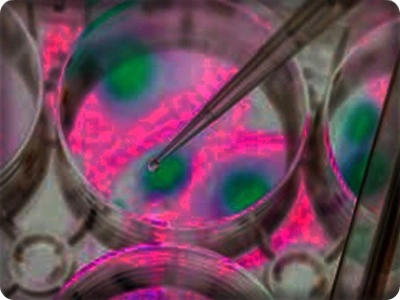In recent years, biotechnological advancements have revolutionized various fields, including medicine and agriculture. While these advancements have brought about numerous benefits, there is also a growing concern regarding the potential for these technologies to be misused or mishandled, leading to the creation of deadlier pathogens. This blog post aims to explore the potential threats posed by biotechnological developments, both due to accidental leaks and deliberate malicious use of engineered pathogens.
Section 1: The Promise of Biotechnological Advancements
Biotechnology has played a pivotal role in improving the quality of human life. Numerous breakthroughs, such as gene editing technologies like CRISPR-Cas9, have enabled scientists to tackle previously incurable diseases and enhance food production. These advancements have sparked hope for a better future, with the potential to eradicate diseases and ensure global food security.
Section 2: The Dual-Use Nature of Biotechnology
Biotechnology, by its very nature, possesses the potential for both beneficial and harmful outcomes. While the intention behind its development is primarily to address societal challenges, it’s important to acknowledge the dual-use nature of these advancements. The same technologies that can save lives can also be misused if they fall into the wrong hands or if accidents occur within laboratories.
Section 3: Accidental Leaks: A Cause for Concern
Accidental leaks of engineered pathogens pose a significant threat. Laboratories working with potent pathogens must adhere to strict safety protocols to prevent accidental releases. However, human error, equipment failure, or even natural disasters can result in the escape of these pathogens into the environment. Such incidents could lead to the spread of highly infectious diseases, potentially causing devastating pandemics if not contained swiftly.
Section 4: The Importance of Biosecurity Measures
To mitigate the risks associated with accidental leaks, robust biosecurity measures must be implemented. This includes stringent safety regulations, regular inspections, and continuous training of personnel working with dangerous pathogens. Additionally, the establishment of international frameworks and collaborations can ensure that countries share best practices and collectively work towards preventing accidental releases.
Section 5: Malicious Use: A Growing Concern
While accidental leaks are a significant concern, the deliberate misuse of biotechnological advancements poses an even greater threat. The intentional engineering of pathogens for malicious purposes, such as bioterrorism, has the potential to unleash pandemics with catastrophic consequences. The accessibility of biotechnology and the dual-use nature of its applications make it imperative to address this issue collectively.
Section 6: Strengthening Global Governance
To combat the potential misuse of biotechnology, global governance must be strengthened. International agreements and collaborations can help establish guidelines, enforce regulations, and promote responsible practices. Encouraging transparency and information sharing between countries can assist in early detection and response to any suspicious activities or indications of potential bioterrorism.
Section 7: Ethical Considerations and Responsible Research
Alongside regulatory measures, ethical considerations should guide the development and use of biotechnological advancements. The scientific community must adhere to strict codes of conduct, emphasizing responsible research and the consideration of potential risks. Implementing ethical frameworks can help ensure that scientists are mindful of the consequences of their work and prioritize the safety and well-being of society.
Section 8: Public Awareness and Engagement
Raising public awareness about the potential risks and benefits of biotechnological developments is crucial. Educating the general public about the nature of biotechnology, its potential for misuse, and the measures in place to prevent such misuse can foster a sense of collective responsibility. Engaging the public in discussions, debates, and decision-making processes can help shape policies that strike a balance between scientific progress and public safety.
Section 9: Continuous Monitoring and Adaptability
As biotechnological advancements continue to evolve, it is essential to establish mechanisms for continuous monitoring and adaptability. Regular assessments of existing safety protocols, risk assessments, and technological advancements can help identify and address emerging threats. Flexibility and the ability to adapt to changing circumstances are vital to stay ahead of potential biotechnological risks.
Section 10: Conclusion
Biotechnological developments hold immense potential for improving human life, but they also come with inherent risks. The threat of deadlier pandemics due to accidental leaks or the malicious use of engineered pathogens is a significant concern. By implementing robust biosecurity measures, strengthening global governance, promoting responsible research, raising public awareness, and continuously monitoring advancements, we can navigate the risks associated with biotechnology and ensure that its benefits outweigh the potential threats it poses.



